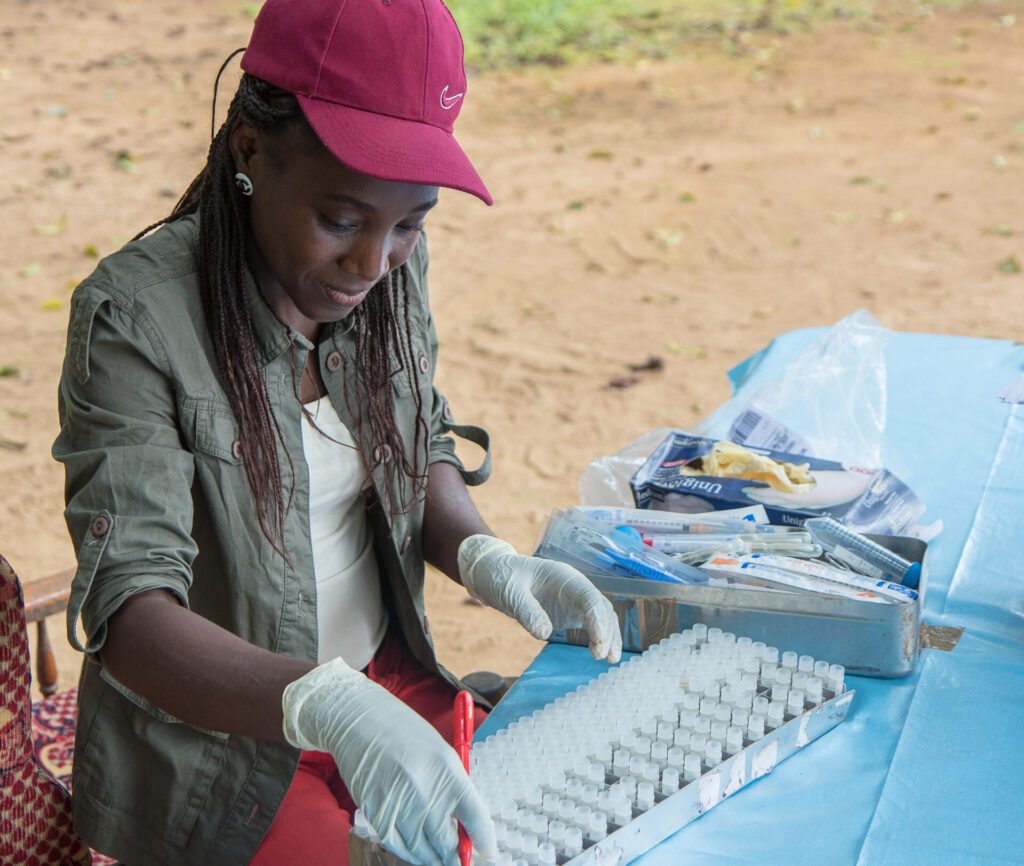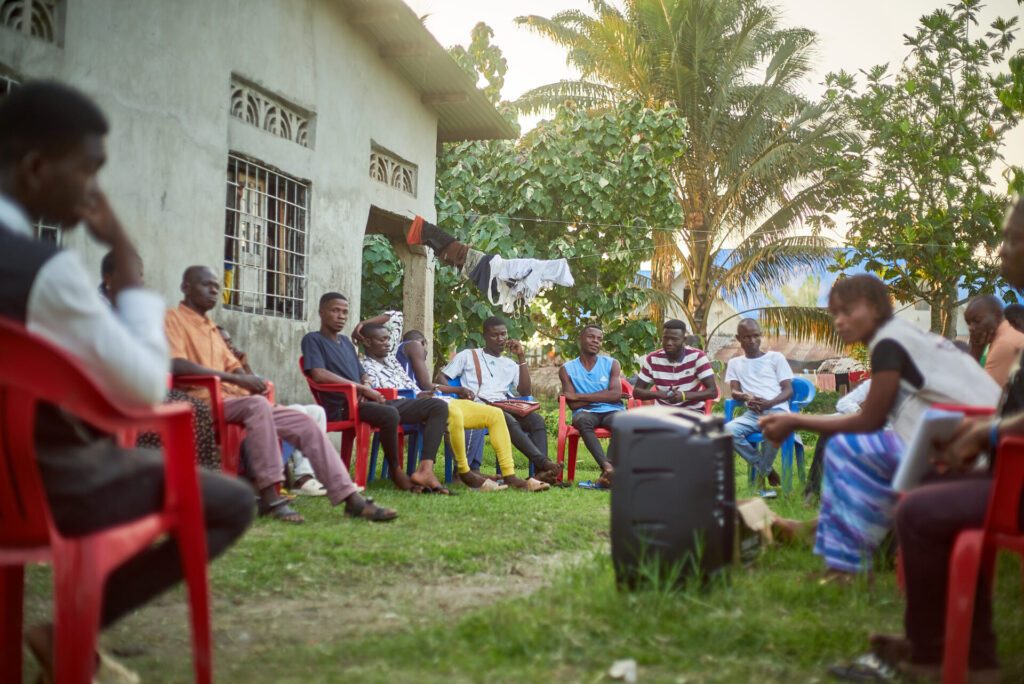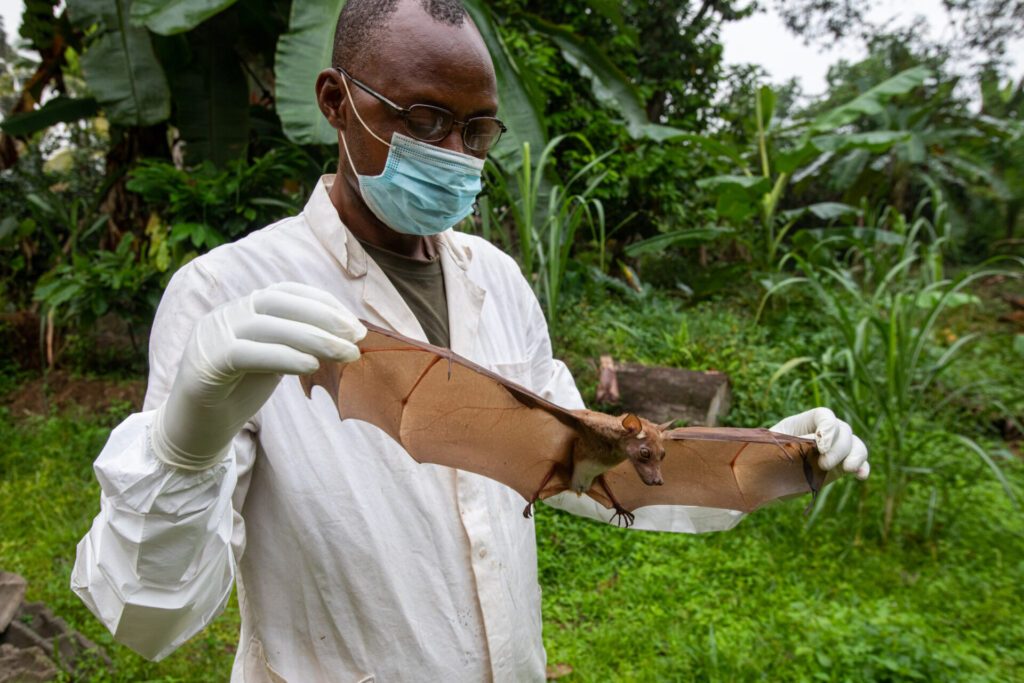EBO-SURSY Project’s seven-year impact on wildlife health in Africa

After seven successful years, one of the World Organisation for Animal Health’s flagship projects, EBO-SURSY, is coming to a close. Highlighting its significant impact on animal health, the project has produced a final impact report underscoring its commitment to improving everyone’s health. The primary focus of this EU-funded program has been on the protection of wildlife health, and the health of the human communities who live beside them.
Partnered closely with ten countries in West and Central Africa, the project applied a One Health approach, strengthening national and regional early detection systems for zoonotic wildlife diseases. By improving ways to detect and prepare for outbreaks of viral haemorrhagic fevers like Ebola and Lassa fever, the EBO-SURSY Project has helped build a healthier world for animals and humans alike.
Empowering the animal health workforce
A key component in strengthening a health system is investing in personnel. Without technical knowledge, techniques, material, or resources to excel in their profession, staff cannot thrive and perform to their best ability. To bridge these gaps, the
EBO-SURSY Project hosted a wide range of capacity-building activities, including training programmes and scholarships. It gave animal and human health stakeholders all along the chain the means to build robust surveillance systems in their countries, which will encourage long-term, positive impacts.

In addition, the project has also given stakeholders the opportunity to network and build relationships across the One Health spectrum, including animal, human, wildlife, or environmental health professionals. These strengthened relationships are the backbone of a comprehensive health system.
700+
professionals and students trained in laboratory techniques, ecology, epidemiology and surveillance systems
600
health professionals engaged in improved intersectoral collaboration
30
educational grants provided to health professionals to attend One Health and emerging diseases training
Building trust with communities
Because of zoonotic spillover, humans and wildlife alike are increasingly vulnerable to many diseases such as viral haemorrhagic fevers. People living near or within natural ecosystems such as rainforests are generally isolated and lack access to information on how to safeguard themselves, wildlife and domestic animals.
Informed communities are empowered to protect themselves, other humans and wildlife, and EBO-SURSY was committed to building their knowledge. By looking out for tell-tale signs of zoonoses, including unusual deaths and behaviour in wildlife, local communities are the first in line to alert national Veterinary Services or wildlife authorities.
The EBO-SURSY Project, in partnership with local journalists and youth reporters, reached out to communities through radio campaigns focused on raising awareness on wildlife diseases and prevention strategies.

Overall the efforts of the project led to:
reaching over
3 million
listeners in Guinea and DRC with life saving information
the development and broadcasting of over
2,400
public service announcements
the training of over
60
radio broadcasters, journalists and youth reporters on reporting animal health issues
Predicting and preventing outbreaks
Building capacity and raising community awareness are essential steps in establishing strong national surveillance systems, but they are not enough. It’s imperative for countries to implement plans to monitor pathogens and provide clear, accessible guidance for both professionals and the public during an outbreak.
To empower national Veterinary Services and wildlife professionals build effective surveillance protocols step-by-step, the EBO-SURSY Project held several regional workshops. Some attendee countries went further, holding national-level workshops with EBO-SURSY support, to refine their draft protocols for priority diseases and to gain national support to pass them into legislation.
True to the project’s nature, a holistic approach involving professionals from across the One Health spectrum was adopted throughout
- Sierra Leone, Republic of Congo and the Central African Republic adopted national multisectoral Rift Valley fever surveillance protocols.
- Ivory Coast has one on Lassa fever
- 10 countries now have experience building surveillance protocols, which can be applied to other diseases in the future.
- Other countries that attended the workshops made great progress in developing protocols which may be implemented in the future.
Because efficient surveillance protocols must be grounded in scientific fact, the
EBO-SURSY Project was committed to scientific research on key viral haemorrhagic fever diseases. It organised field investigations and supported multi-scale research through its consortium partners, Le Centre de coopération internationale en recherche agronomique pour le développement (CIRAD), Institut de recherche pour le développement (IRD) and Institut Pasteur.
All three are known for their scientific excellence in the prevention and control of zoonoses, and worked with local stakeholders in the project countries with the aim of providing data-driven predictive models and risk assessment tools.
- 197 field investigations to support scientific research of 5 viral haemorrhagic fevers, coronavirus, monkeypox and more.
- 43,000 animal samples and 6,000 human samples taken to track diseases at the animal-human interface and improve scientific studies.
- 43 scientific studies were published as a result of EBO-SURSY funded research in the fields of ecology, genetics and socio-economics.
- 25 methodologies and diagnostic tools have been improved or developed.

A new future for wildlife health
As the EBO-SURSY Project concludes its commitments this year, it is about to enter a new phase with the support of the European Union.
Over the next years, it aims to expand its geographic scope to 17 countries and include more scientific partners, as well as additional One Health stakeholders. The project will go even further in helping national Veterinary Services set up efficient surveillance systems, and apply scientific findings from phase one into policy, legislation, and professional guidance to safeguard health.
More information
-
EBO-SURSY Impact Report: Protecting wildlife, protecting our future
-
EBO-SURSY Project website
